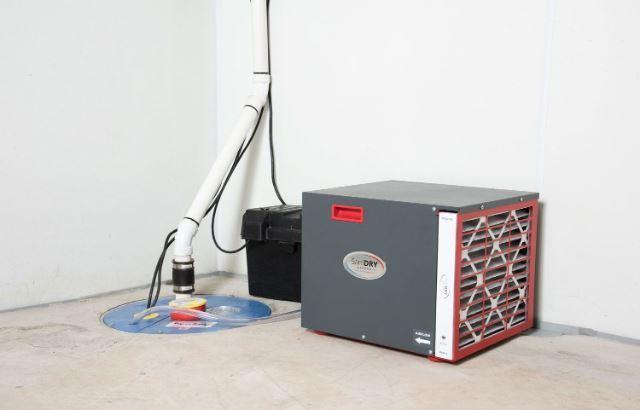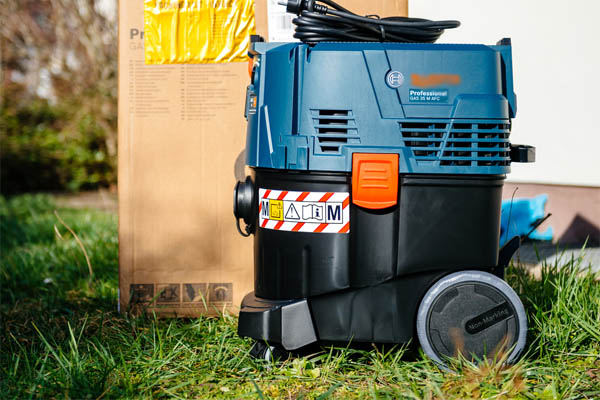Straightforward Tips for Taking Care of Your Sump Pump
Straightforward Tips for Taking Care of Your Sump Pump
Blog Article
Presented here further down you can locate a good deal of brilliant material involving Steps to Cleaning Your Sump Pump Properly.

Sump pumps are critical parts in numerous homes, particularly in locations prone to flooding or extreme dampness. They aid avoid water damage by efficiently removing excess water from cellars or crawl spaces. Nevertheless, like any other home appliance, sump pumps need regular maintenance to ensure they function successfully when needed one of the most. Cleaning your sump pump is a crucial part of its maintenance, and recognizing just how to do it correctly can save you from pricey repairs and potential catastrophes.
Intro
Preserving a tidy sump pump is essential for its appropriate performance and durability. Neglecting this essential job can cause clogs, breakdowns, and ultimately, water damage to your property. Therefore, finding out exactly how to clean up a sump pump is crucial for property owners who rely upon these tools to keep their basements dry and secured.
Understanding the Sump Pump
Prior to diving into the cleansing process, it's essential to have a standard understanding of just how a sump pump functions. Normally set up in a pit or container below the basement floor, a sump pump consists of several essential parts, consisting of a pump, a float button, and a discharge pipe. When water accumulates in the pit, the float switch turns on the pump, which after that pumps the water out via the discharge pipe, away from the building's structure.
Indications of a Dirty Sump Pump
Recognizing when your sump pump needs cleansing is important for stopping potential malfunctions. Some common signs that indicate a filthy sump pump consist of weird noises during procedure, decreased water flow, and noticeable debris in the pit. If you notice any of these signs, it's essential to cleanse your sump pump immediately to avoid any kind of more problems.
Preparing for Cleansing
Before you begin cleansing your sump pump, it's necessary to take some safety precautions. Beginning by shutting off the power to the pump to avoid any type of electric crashes. Furthermore, use proper protective equipment, such as handwear covers and safety glasses, to protect yourself from dust, particles, and possible virus.
Step-by-step Guide to Cleansing a Sump Pump
Turning off the Power
Begin by separating the power supply to the sump pump to avoid any crashes while cleaning.
Eliminating Debris and Dirt
Utilize a pail or a scoop to get rid of any visible particles, dirt, or sediment from the sump pit. Dispose of the particles appropriately to prevent it from blocking the pump or the discharge pipeline.
Cleaning the Pump and Float Switch
As soon as the pit is clear of particles, very carefully eliminate the pump from the pit. Check the pump and the float button for any kind of signs of damages or wear. Utilize a soft brush or towel to cleanse the surface areas and eliminate any type of accumulated grime.
Purging the System
After cleaning up the pump and float switch, flush the sump pit with tidy water to get rid of any type of remaining dirt or debris. This will assist guarantee that the pump runs smoothly and successfully.
Checking for Correct Performance
Before re-installing the pump, do a fast test to make certain that the float switch activates the pump correctly. Pour some water right into the sump pit and observe the pump's operation. If everything is working appropriately, you can reassemble the pump and reconnect the power supply.
Upkeep Tips to Keep Your Sump Pump Clean
Along with routine cleansing, there are numerous upkeep suggestions you can follow to maintain your sump pump in ideal condition:
Conclusion
Cleaning your sump pump is an important facet of its upkeep and guarantees that it runs efficiently when you need it the most. By following the actions outlined in this guide and including normal maintenance into your routine, you can extend the life expectancy of your sump pump and shield your home from water damages.
6 STEPS ON HOW TO CLEAN A SUMP PUMP PROPERLY
UNDERSTANDING SUMP PUMPS
Your sump pump plays a crucial role in protecting your home by managing and removing excess water. It primarily functions as a “shield”, guarding your basement against the damaging effects of water accumulation. The pump is housed in a sump pit in the lowest part of your basement, and its job is to pump out any water that collects there.
During heavy rainfalls or when snow melts rapidly, water can infiltrate your basement, posing potential risks like flooding, structural damage, and harmful mold growth. Here, the sump pump springs into action, pumping out the intruding water and directing it away from your home.
SAFETY FIRST
Before cleaning, remember to prioritize safety. Disconnect the sump pump from the power source to prevent any accidental electric shocks. Also, wear sturdy gloves to protect your hands from any sharp or dirty components within the pump.
REMOVE THE SUMP PUMP
After ensuring your safety, the next step is to remove the sump pump from its pit. Doing this might require careful maneuvering as you don’t want to damage any pump components. Once removed, clean the sump pit to remove any accumulated debris or sludge.
INSPECT THE PUMP
Inspect the pump for any visible signs of wear or damage. Check the power cord, float switch, and impeller housing. If any components look worn out or damaged, consider replacing them to ensure optimal performance.
CLEAN THE PUMP
Thoroughly clean the pump with warm, soapy water. Make sure to rid it of any dirt, gravel, or other debris that might impede its performance. You can use a toothbrush to clean the small, hard-to-reach parts of the pump.
REINSTALL THE SUMP PUMP
Reinstall the pump into the sump pit Make sure it’s positioned correctly to remove the water effectively Once it’s back in place, reconnect it to the power source TEST THE PUMP
Finally, pour some water into the pit to ensure the pump works correctly. It should start automatically and begin pumping out the water; if it doesn’t, check the power source and the positioning of the pump.
Remember, while cleaning your sump pump is an essential part of home maintenance, hiring a professional plumber for a thorough inspection and cleaning at least once a year is also important. This will ensure that your pump is in optimal condition, ready to protect your home from potential water damage.
BEST PRACTICES FOR CLEANING SUMP PUMP DISCHARGE PIPES
Regular Inspection: Regularly inspect your discharge pipes, especially during heavy rainfall or snowmelt periods. Look for any signs of blockage or damage. Early detection of problems can prevent serious issues down the line. Periodic Cleaning: Over time, sediment and debris can accumulate in the discharge pipes, impeding the flow of water. Regular cleaning helps keep the pipes clear and functioning efficiently. You can use a high-pressure water jet to effectively clean the pipes. Insulation During Winter: In colder climates, discharge pipes can freeze, blocking the outflow of water. Protect your discharge pipes from freezing temperatures by insulating them with foam pipe insulation. This will ensure the sump pump can continue to discharge water even in freezing conditions. Proper Positioning: The discharge pipe should be positioned to direct water away from your home’s foundation. Improper positioning can lead to water seeping back into the basement. Ensure the pipe is long enough and angled correctly. Installation of a Check Valve: A check valve prevents water from flowing back into your sump pit after the pump has pushed it out. Installing a check valve helps maintain the efficiency of your sump pump and reduces the risk of flooding. Minimize Pipe Turns: Every curve or turn in the discharge pipe can decrease the efficiency of water flow. By minimizing turns and bends in your discharge pipe, you can increase the efficiency of your sump pump. https://www.fullspeedplumbing.com/how-to-clean-a-sump-pump-properly9999/

Do you like reading about How To Effectively Clean A Sump Pump? Make feedback down below. We'd be glad to see your responses about this post. We are looking forward that you visit us again in the future. Sharing is good. Helping people is fun. I praise you for your time. Please come by our blog back soon.
Book Report this page